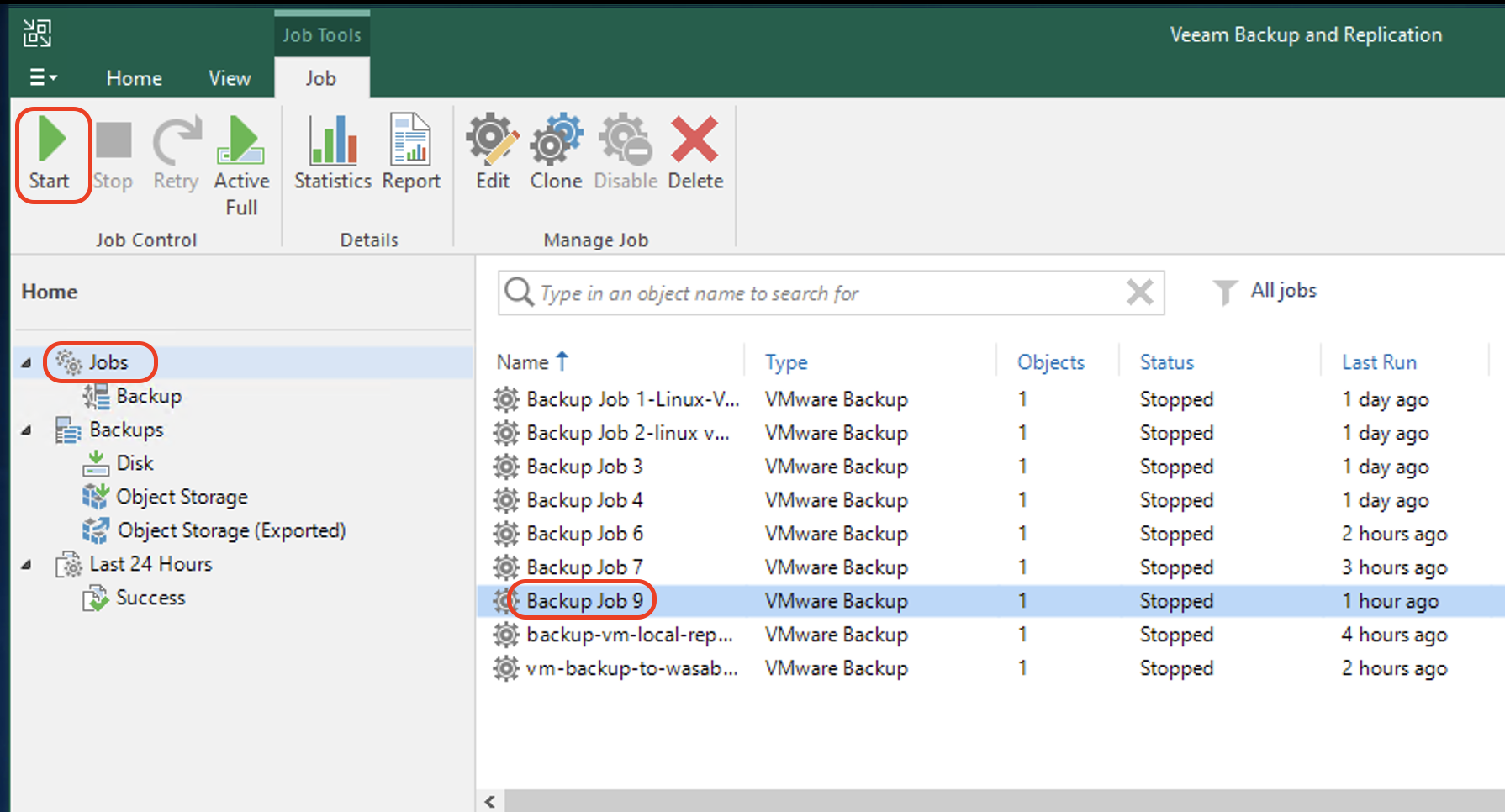How do I create a Backup Job in Veeam v12 to Backup to Wasabi?
Wasabi is a member of Veeam's cloud partner ecosystem. We have worked closely with Veeam to offer both a seamless implementation and a smooth transition to cloud storage. Veeam with Wasabi Solution Overview provides more information on the Wasabi-Veeam partnership and solutions.
Veeam's Backup and Replication software version 12 provides direct to Wasabi object storage functionality for backup and backup copy jobs. This article provides the procedure to backup directly to Wasabi's object storage without using a Scale-out backup repository.
The data restoration process is handled by your specific backup software application. As there are many, potential variables that will affect your unique environment, Wasabi strongly recommends that you seek the guidance of your backup software's technical support team in the event that you encounter difficulty or have application-specific inquiries.
If you are going to leverage immutable Veeam backups, follow the steps in Object Lock: Enabling. Enabling bucket versioning only is not a proper configuration for immutable Veeam backups and can cause problems. If you are simply going to use regular Veeam backups with Wasabi buckets, bucket versioning is not required.
Prerequisites
Active Wasabi Storage account.
Wasabi bucket created and the access and secret keys available.
Veeam Backup and Replication version 12 software installed and licensed. This solution was most recently tested with v12.3, and versions 12.0, 12.1, and 12.2 were previously tested. For other major release versions, refer to Veeam With Wasabi.
A valid Veeam license that supports capabilities for object storage.
Virtual machines to be backed up added to the Veeam B&R application.
Architecture Diagram
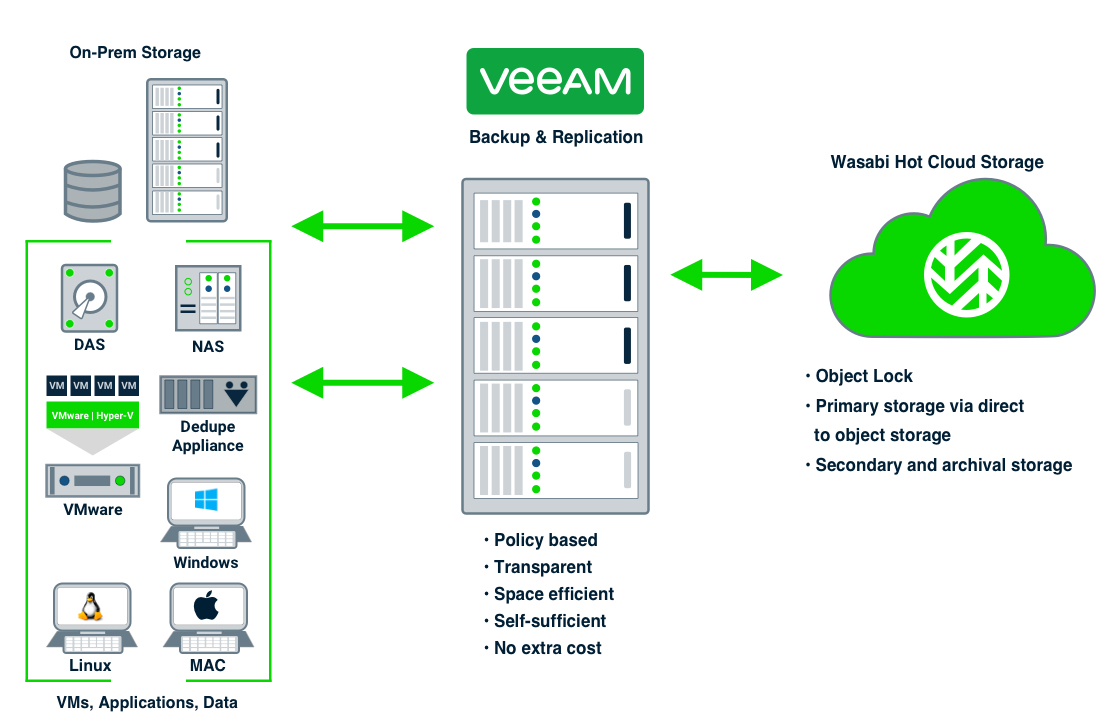
Creating Wasabi as an Object Repository
In Veeam version 12, Veeam Backup and Replication software can directly backup to Wasabi object cloud storage. You will need to have already created a Wasabi bucket to be used for this repository. You will also need the Access key and the Secret key to access the Wasabi bucket.
Follow the below steps to add Wasabi as an object storage repository on Veeam.
On the Backup Infrastructure tab, click Backup Repositories. Click Add Repository to open the add backup repository wizard.
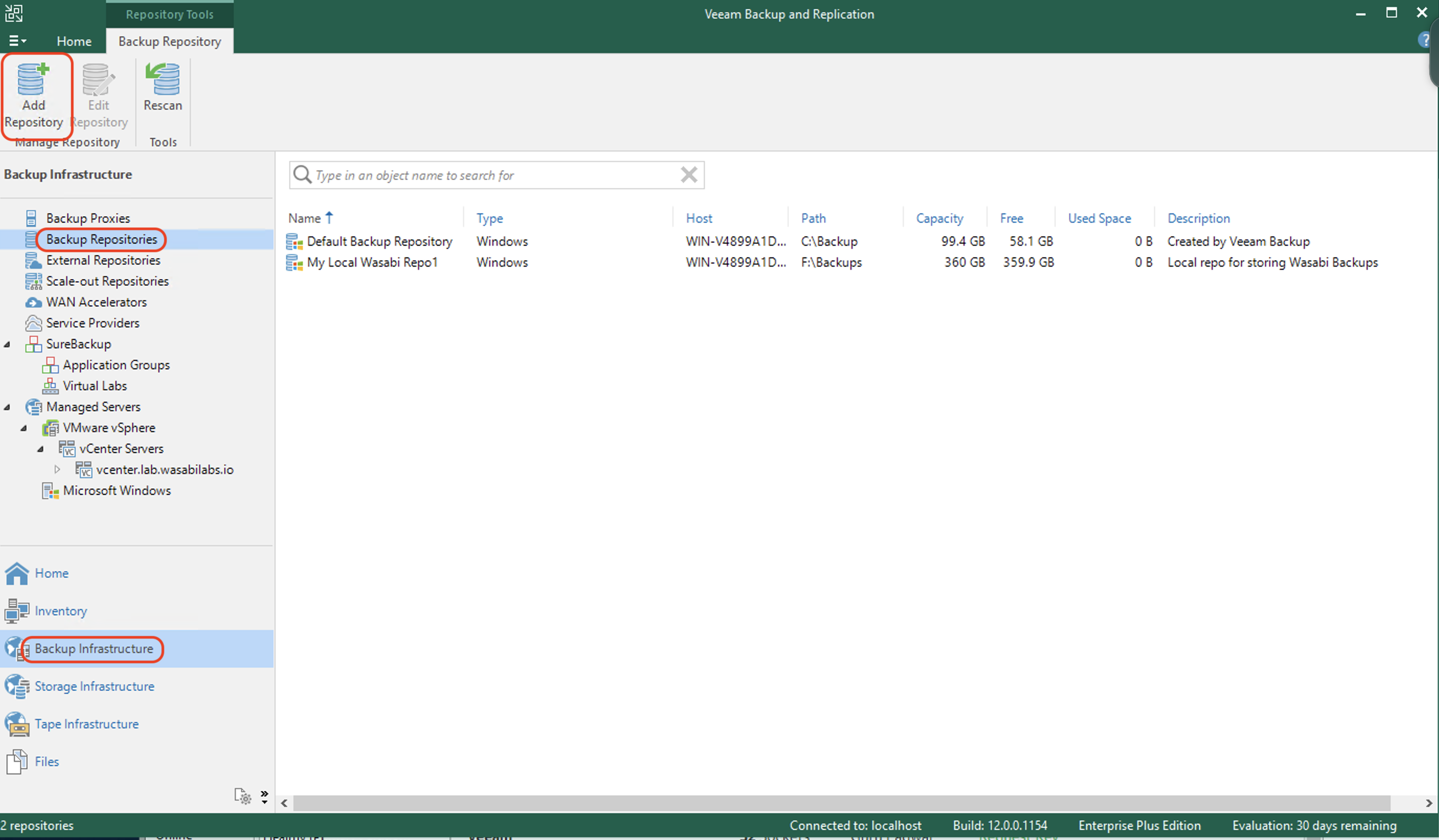
Click Object storage to select the type of backup repository.
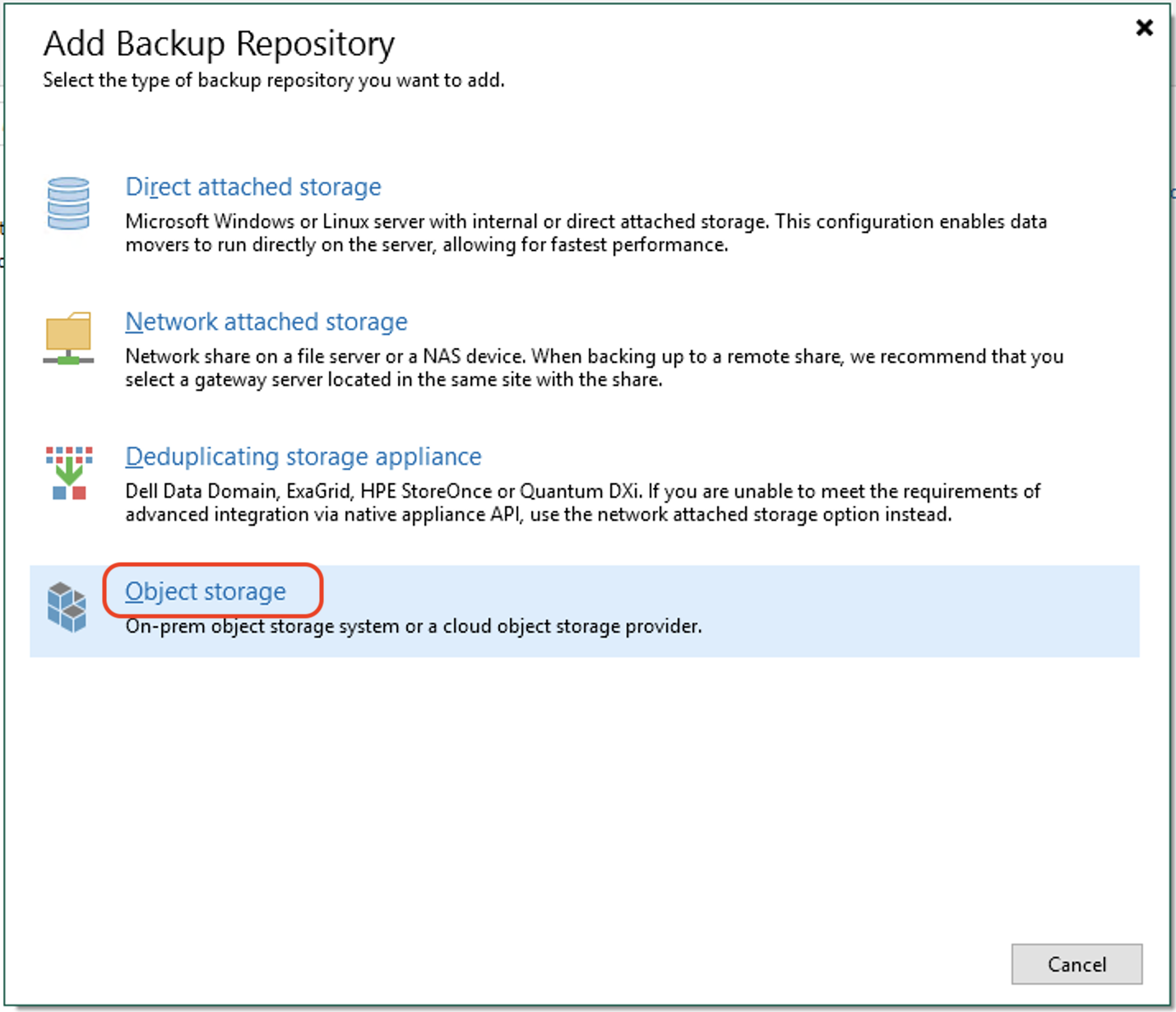
For version 12.2 and greater, click Additional Providers.
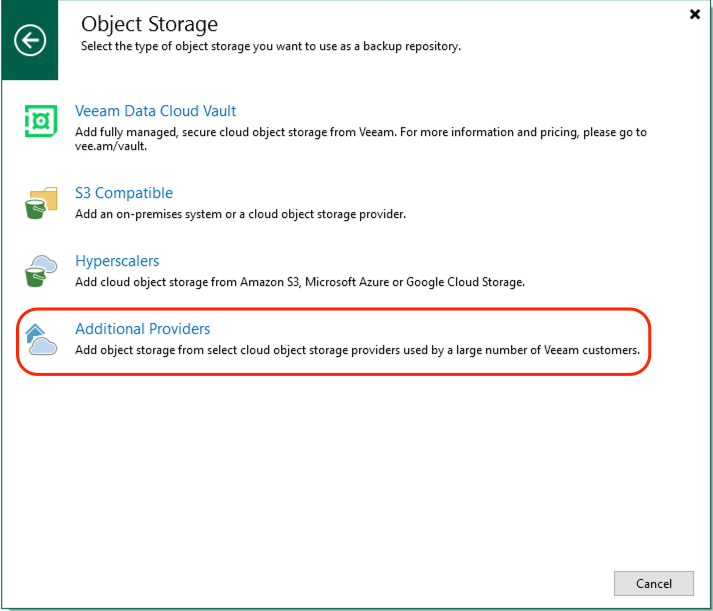 For versions prior to 12.2, click on Wasabi Cloud Storage under Object Storage.
For versions prior to 12.2, click on Wasabi Cloud Storage under Object Storage.
For version 12.2 and greater, click Wasabi Cloud Storage under Additional Providers.

Enter a Name and, optionally, a Description for the object storage repository. Click Next.
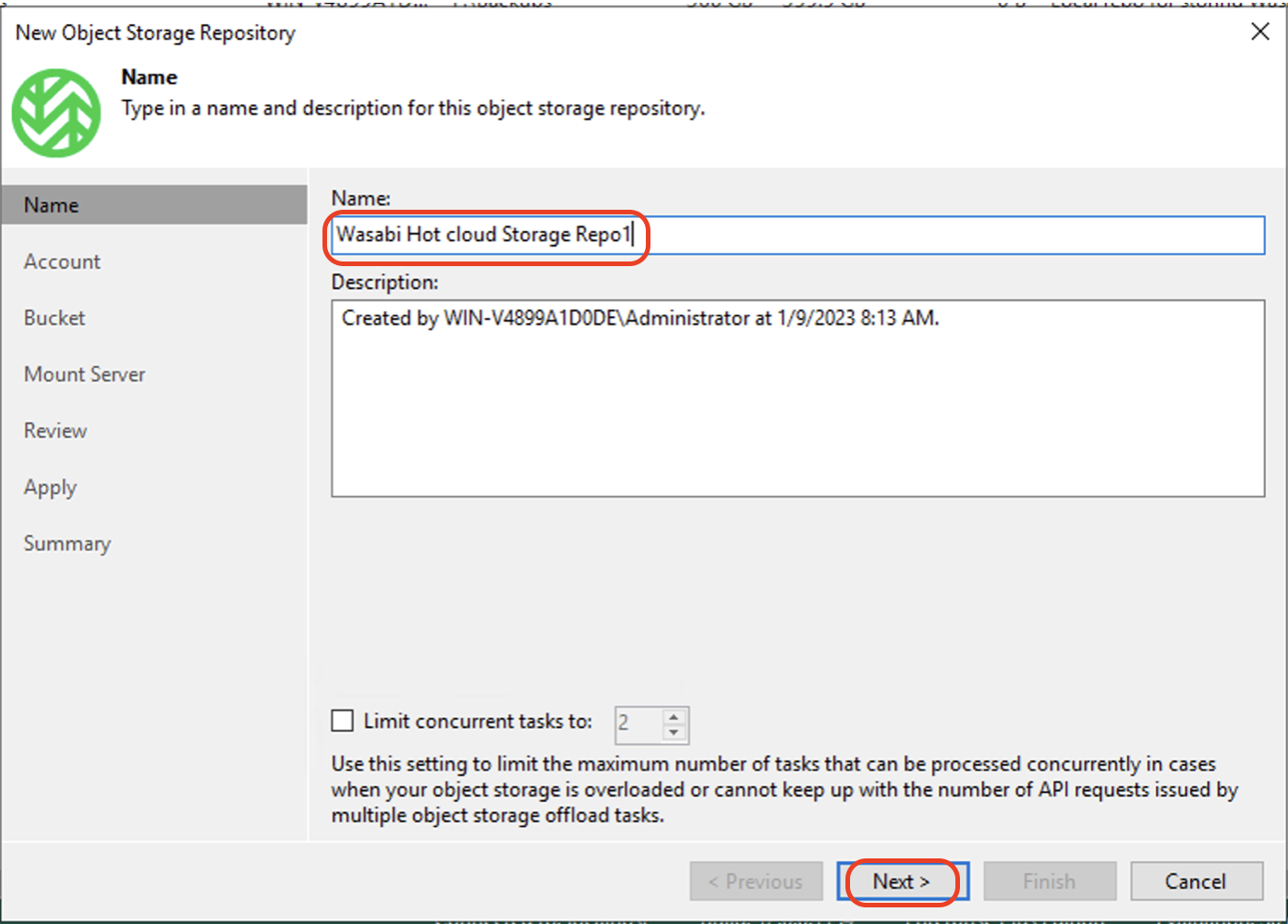
Input the Region. Click Add to input the Access and Secret keys.
This configuration example discusses the use of Wasabi's us-east-1 storage region. Use the region your bucket is located in. For a list of regions, see Available Storage Regions.
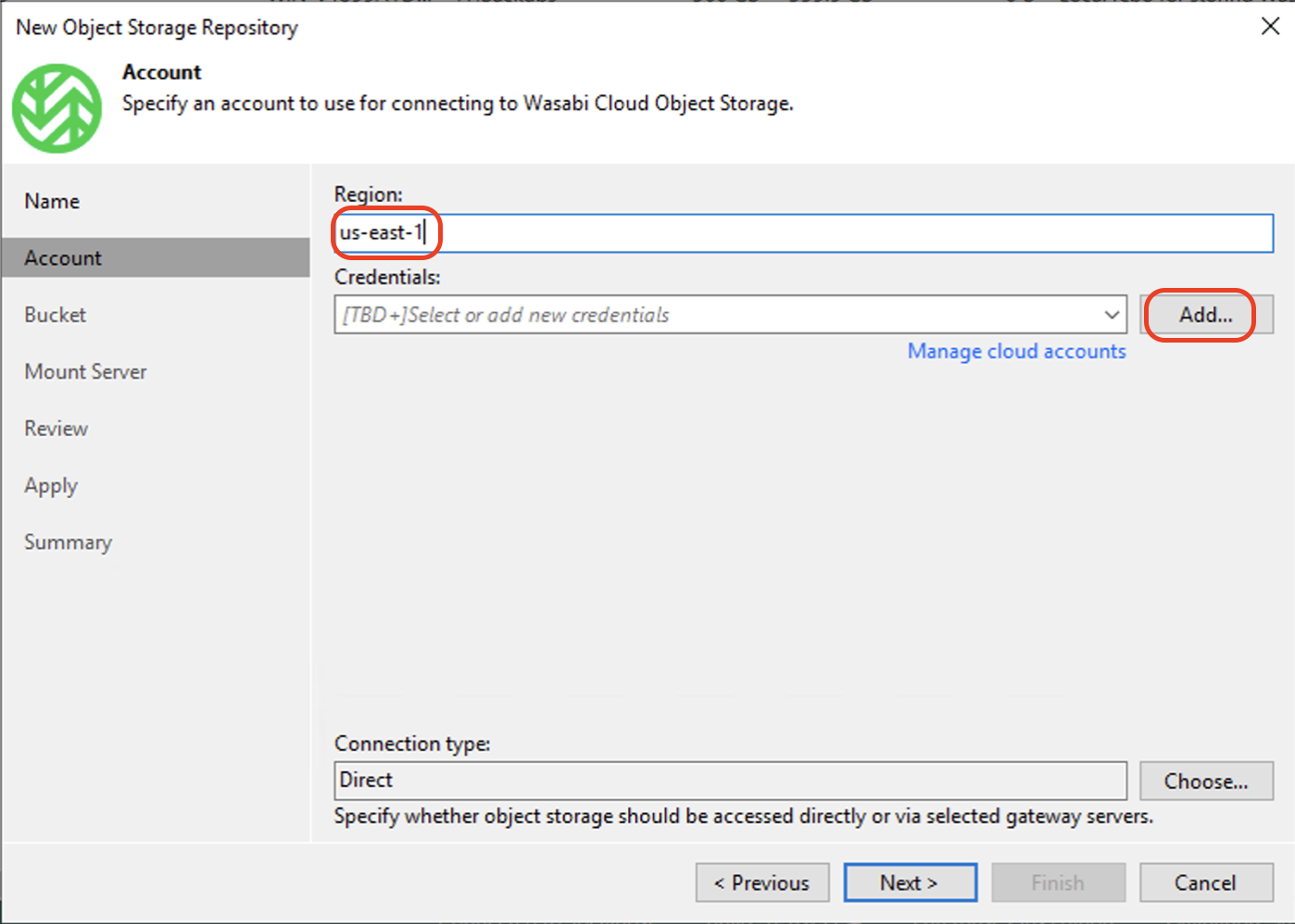
Input your Wasabi Access key and Secret key credentials. Click OK.
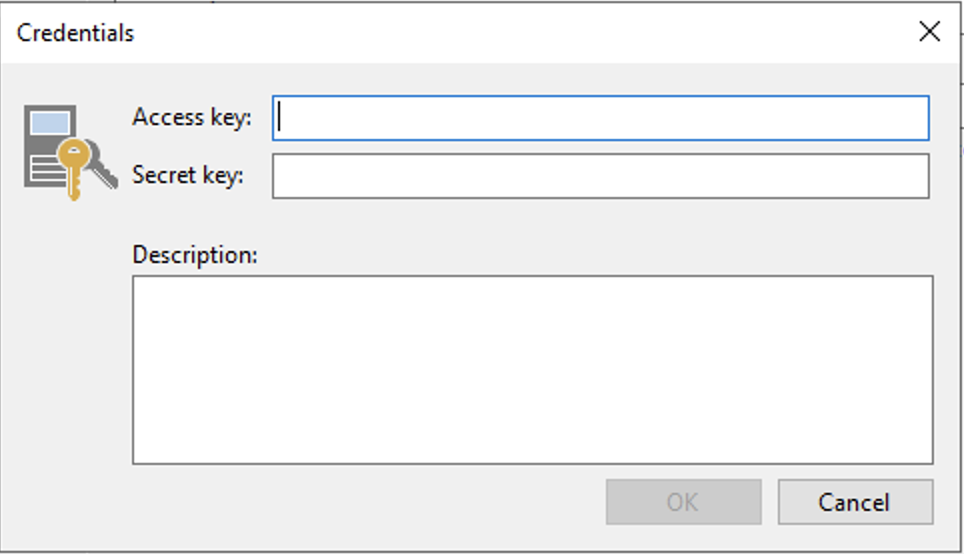
Click Next to continue.
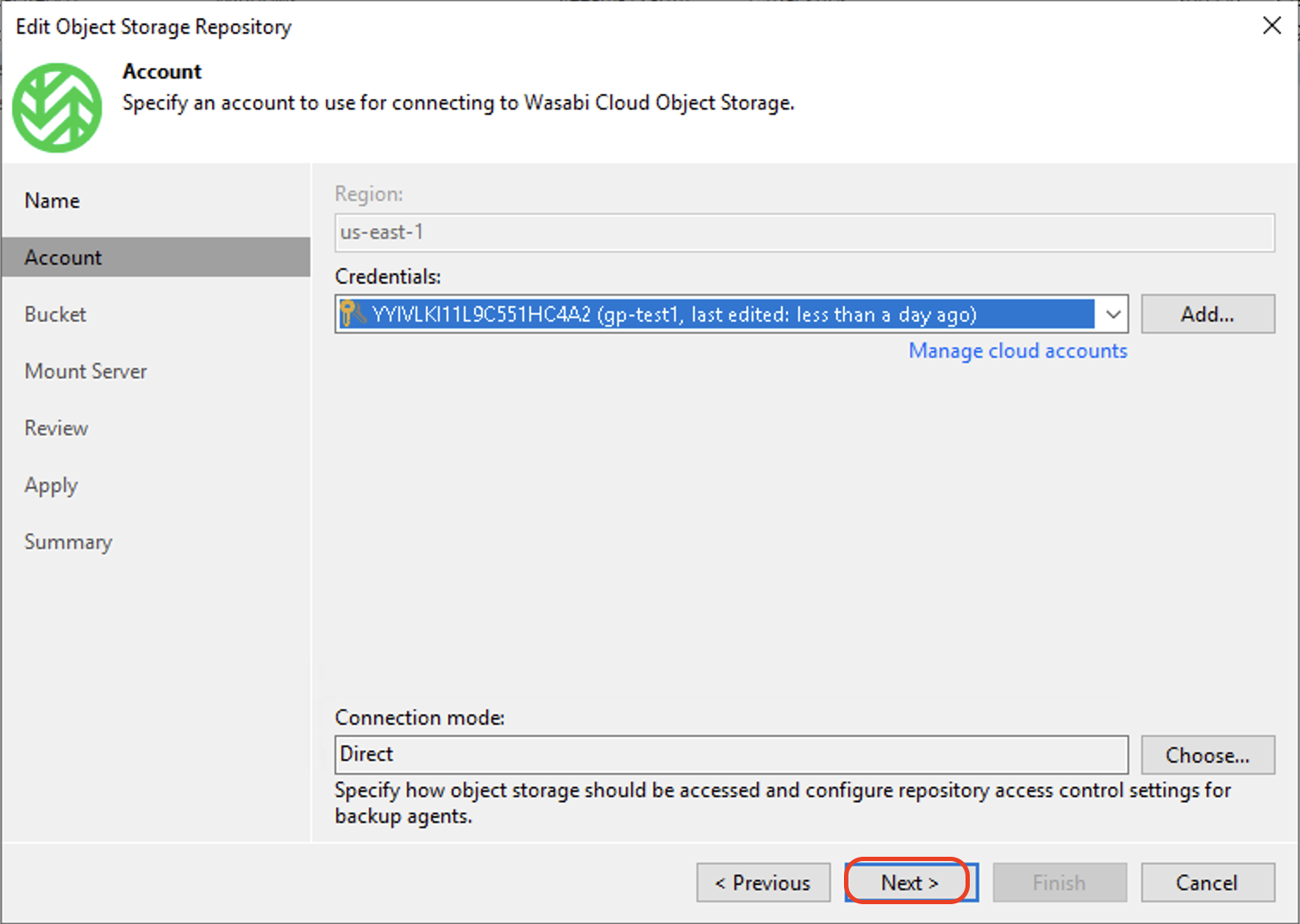
Click Browse beside the Bucket field to choose an existing Wasabi bucket. Then click Browse beside the Folder field. Create a new folder by clicking New Folder in the folder window. Input a name for the folder and click OK. Click Next.
Limit object storage consumption: Defines a soft limit that can be exceeded temporarily for your object storage consumption. Provide the value in TB or PB.
Immutable Backups: To create immutable backups, click the checkbox to check the Make recent backups immutable for and configure the number of days to make backups immutable. For more details, refer to Wasabi Veeam Object Lock Integration.
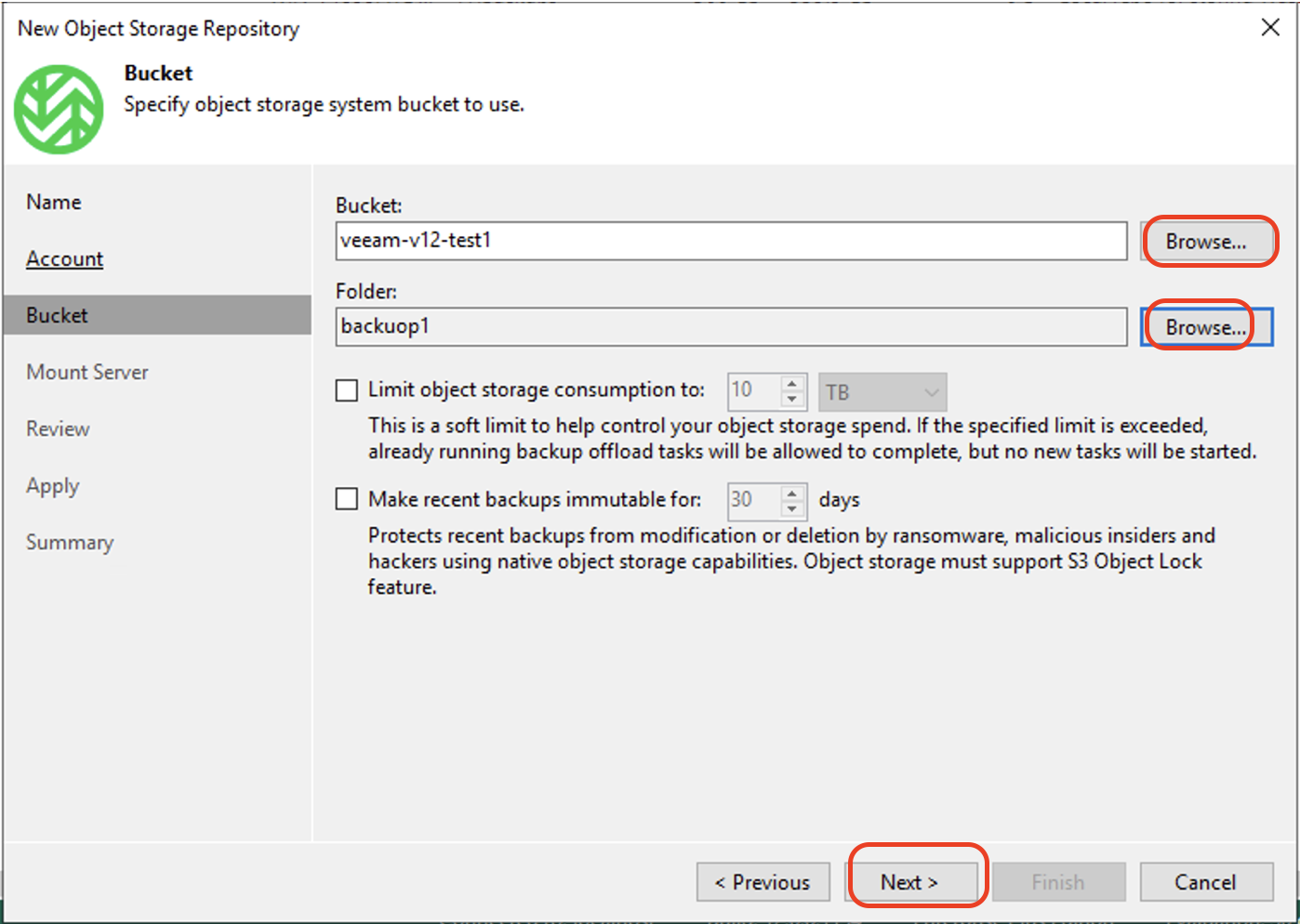
In the Mount Server tab, keep the default values and click Next.
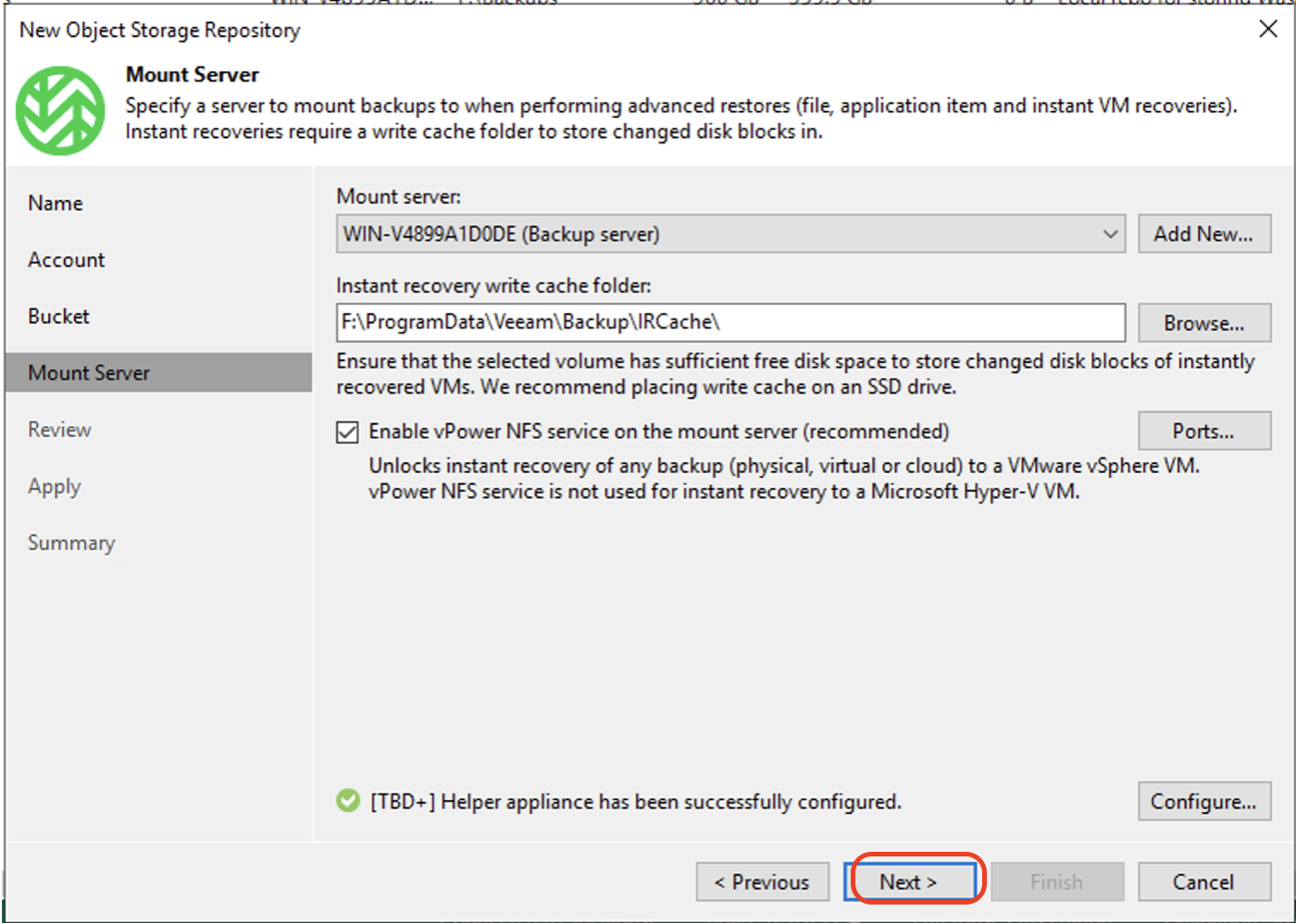
In the Review tab, click Apply.
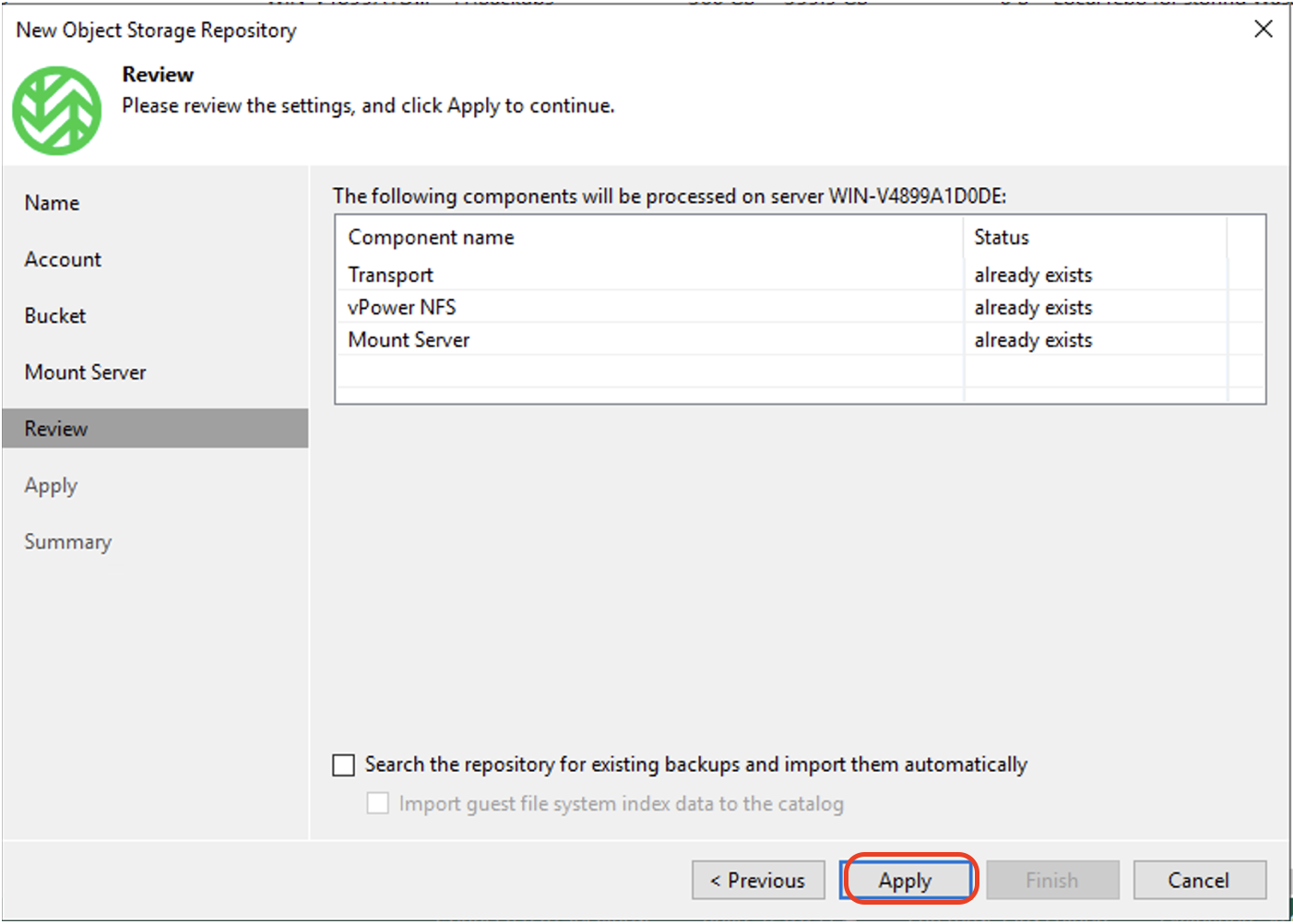
In the Apply tab, click Next to continue.
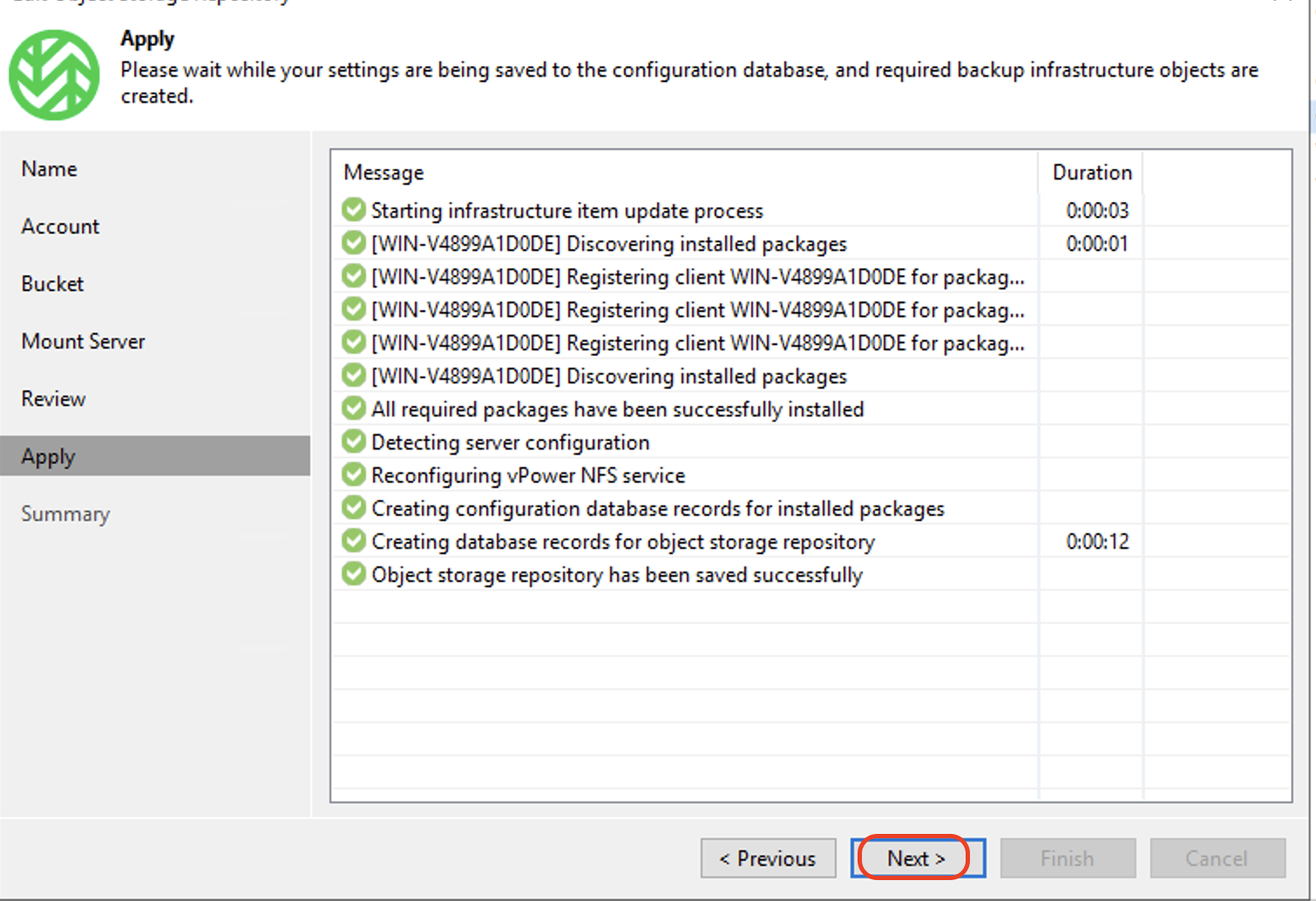
Review the Summary. Click Finish to create the Wasabi repository.
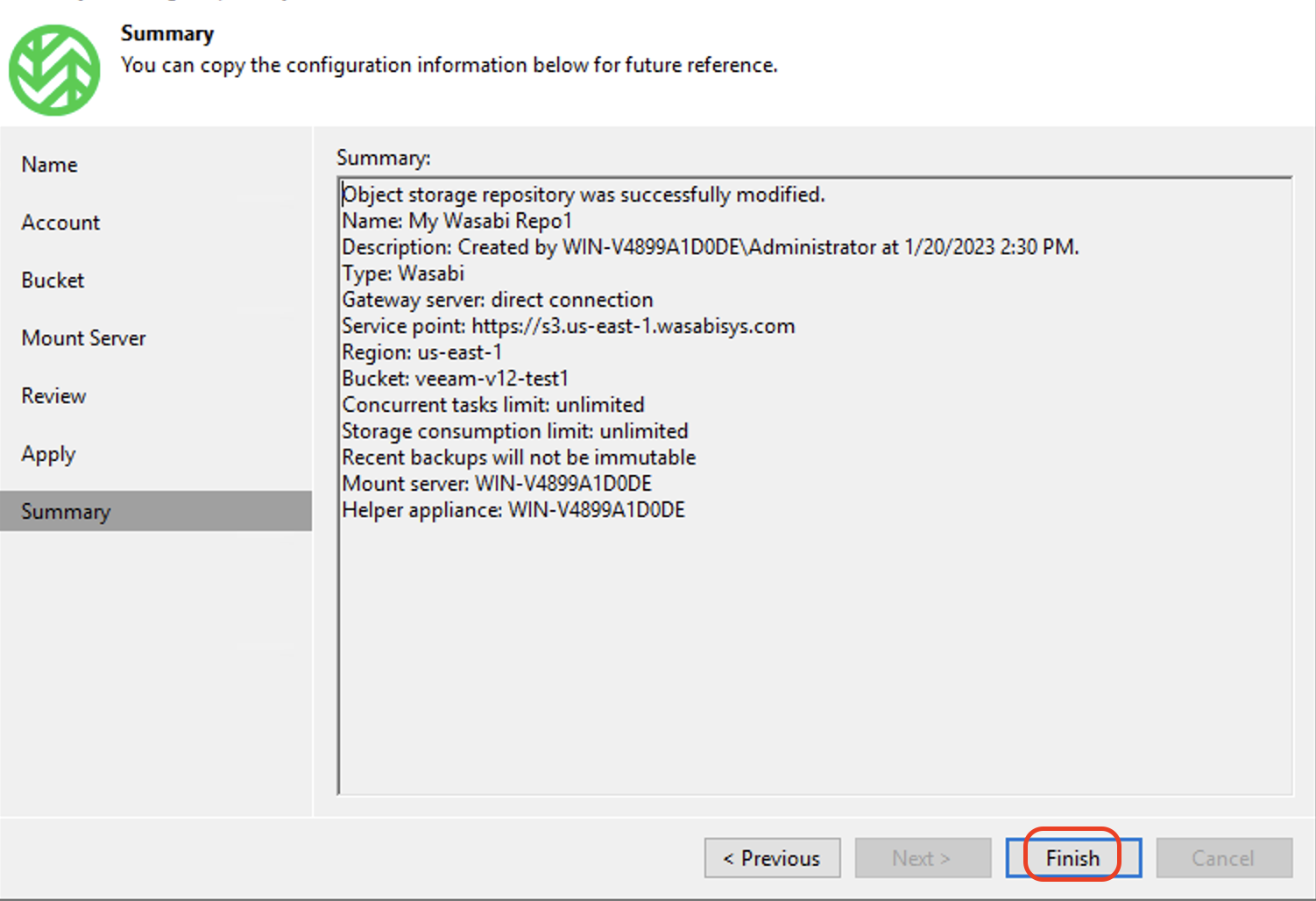
To view the newly created Object repository, click Backup Repositories in the Backup Infrastructure tab.
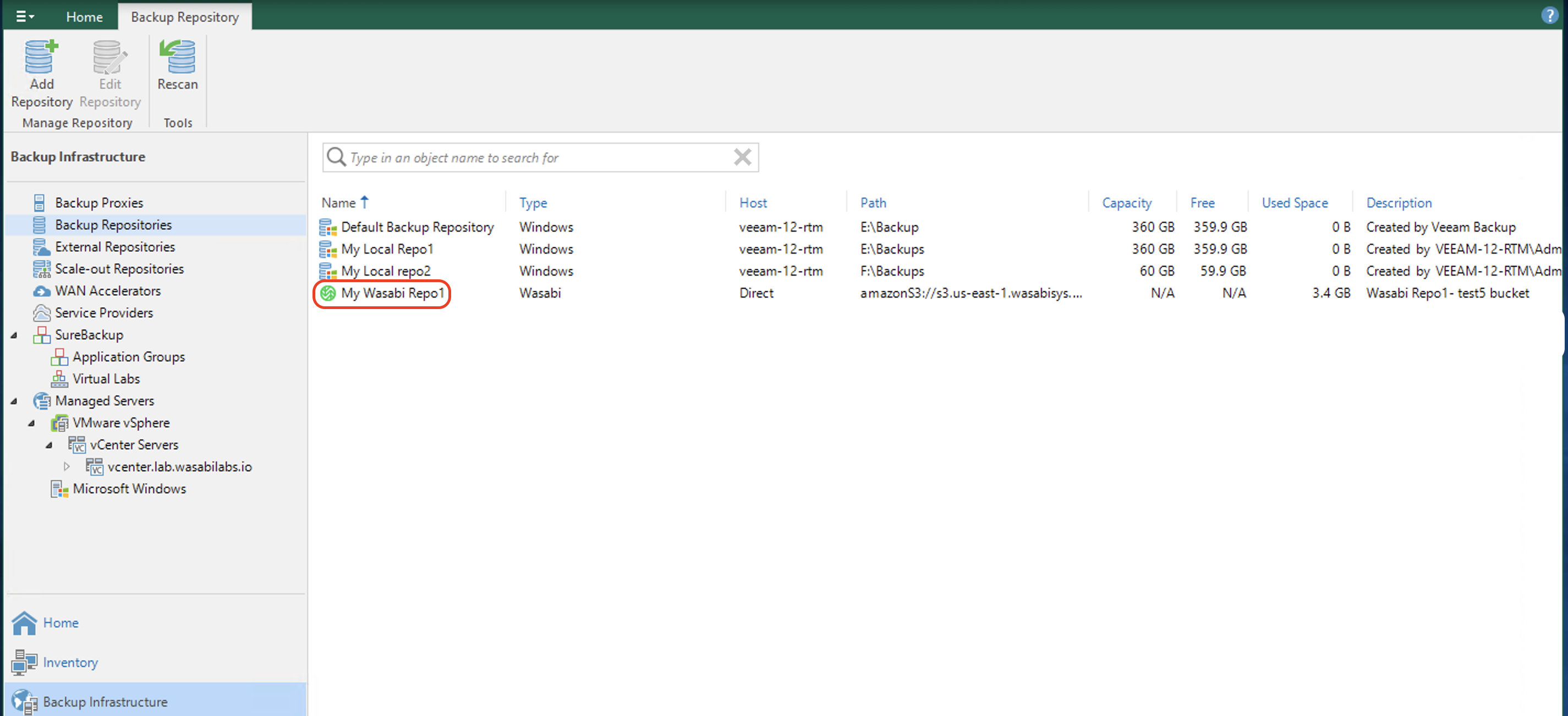
Creating a Backup Job
This section lists the steps to create a new Backup Job to backup to the newly created Wasabi Object storage repository.
From the Home tab, click Backup Job. Click Virtual Machine.
This example creates a backup job for a virtual machine. You can select the appropriate options from the list.
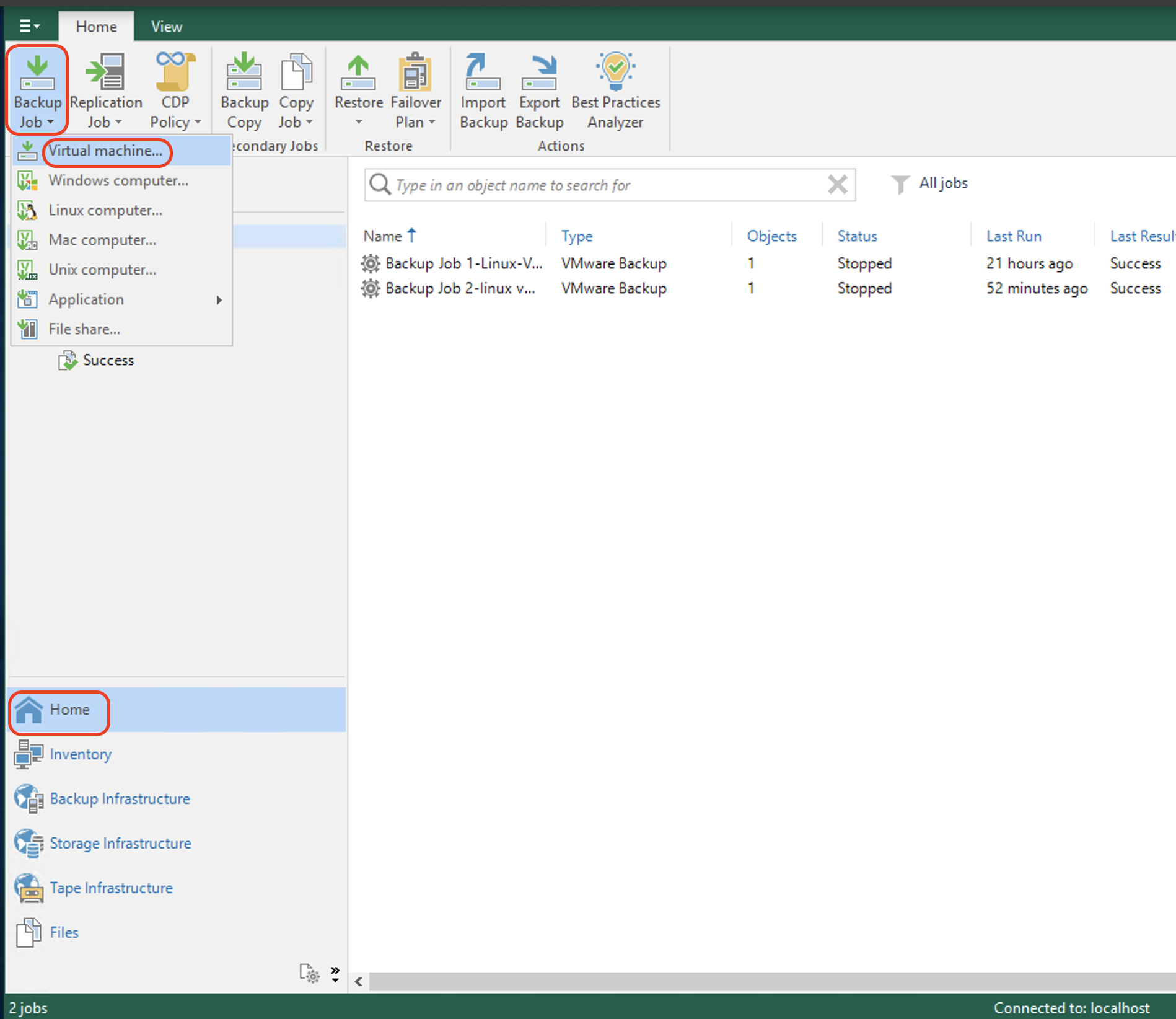
Enter a Name for the backup job and, optionally, a Description. Click Next.
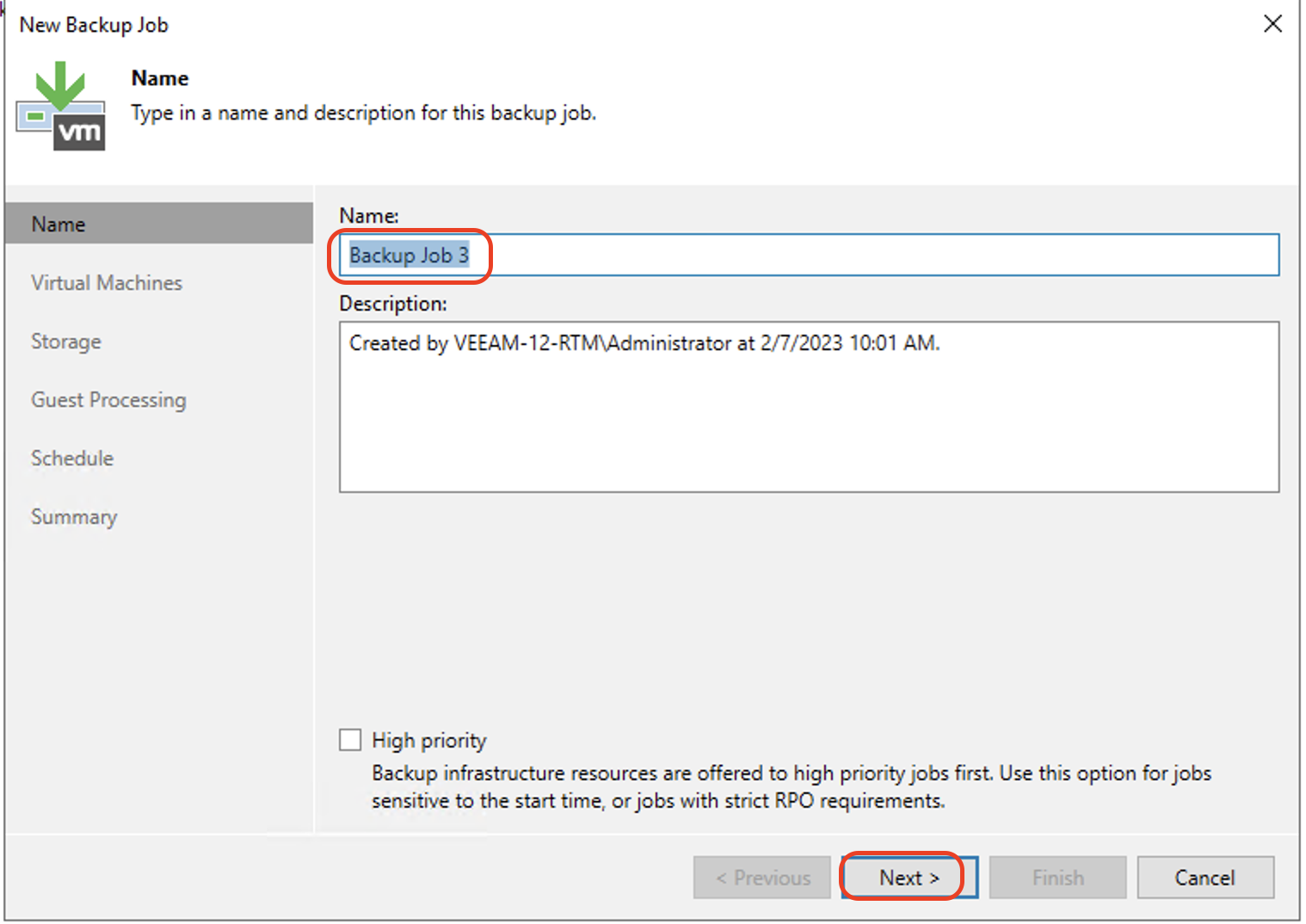
Select the virtual machine by clicking Add and selecting the VM from the list. You can also search for a VM in the search box at the bottom. Once the VM is selected, click Add.
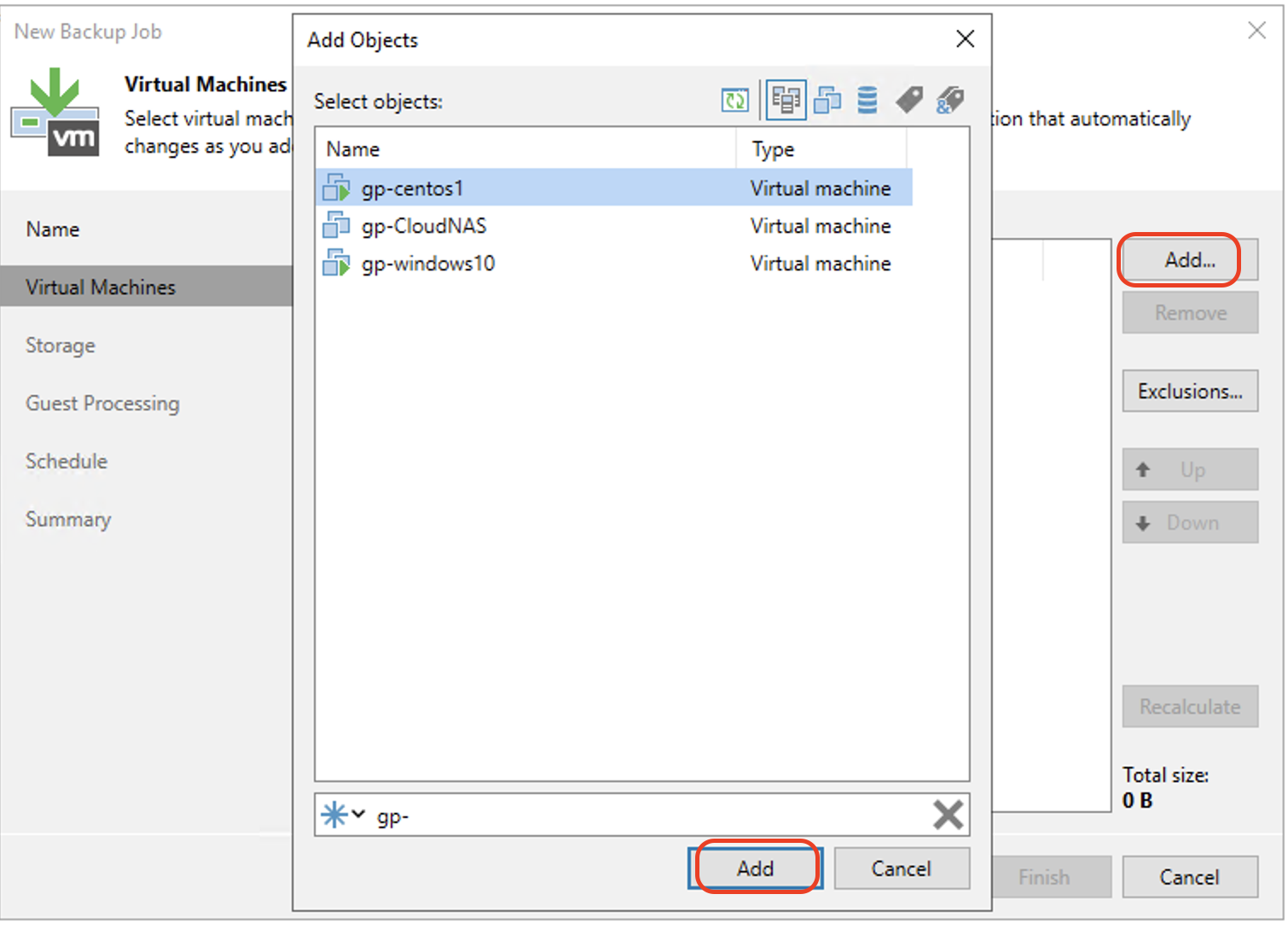
Click Next to continue.
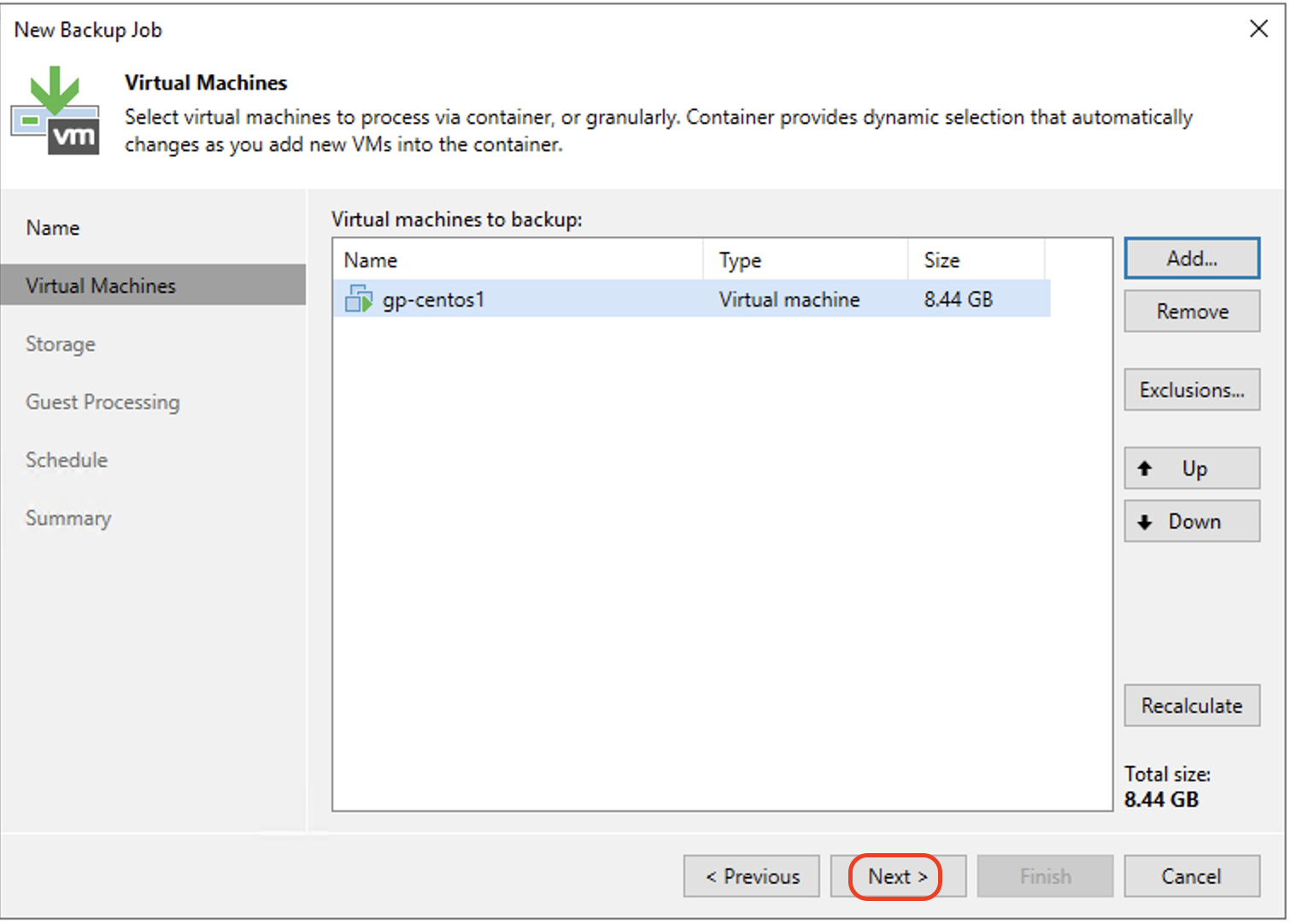
Select the backup repository that was created above from the list. Click Next to continue. Optionally, configure backup storage settings.
Keep certain full backups longer for archival purposes: Checking this option will enable you to configure GFS (Grandfather/Father/Son) backups, which are kept in addition to your backups kept by the retention policy. For more information, review Veeam GFS Docs.
Configure secondary destinations for this job: Checking this will enable you to assign this backup to be backed up by a Backup Copy Job. A Backup Copy Job is a separate job that makes copies of an existing Backup Job when it runs. In order to check this box, you will need to have already created an existing Backup Copy Job. For more information, review Veeam Backup Copy Docs.
The Retention Policy here determines the number of days, or restore points, for which your backup jobs will be retained after its successful job.
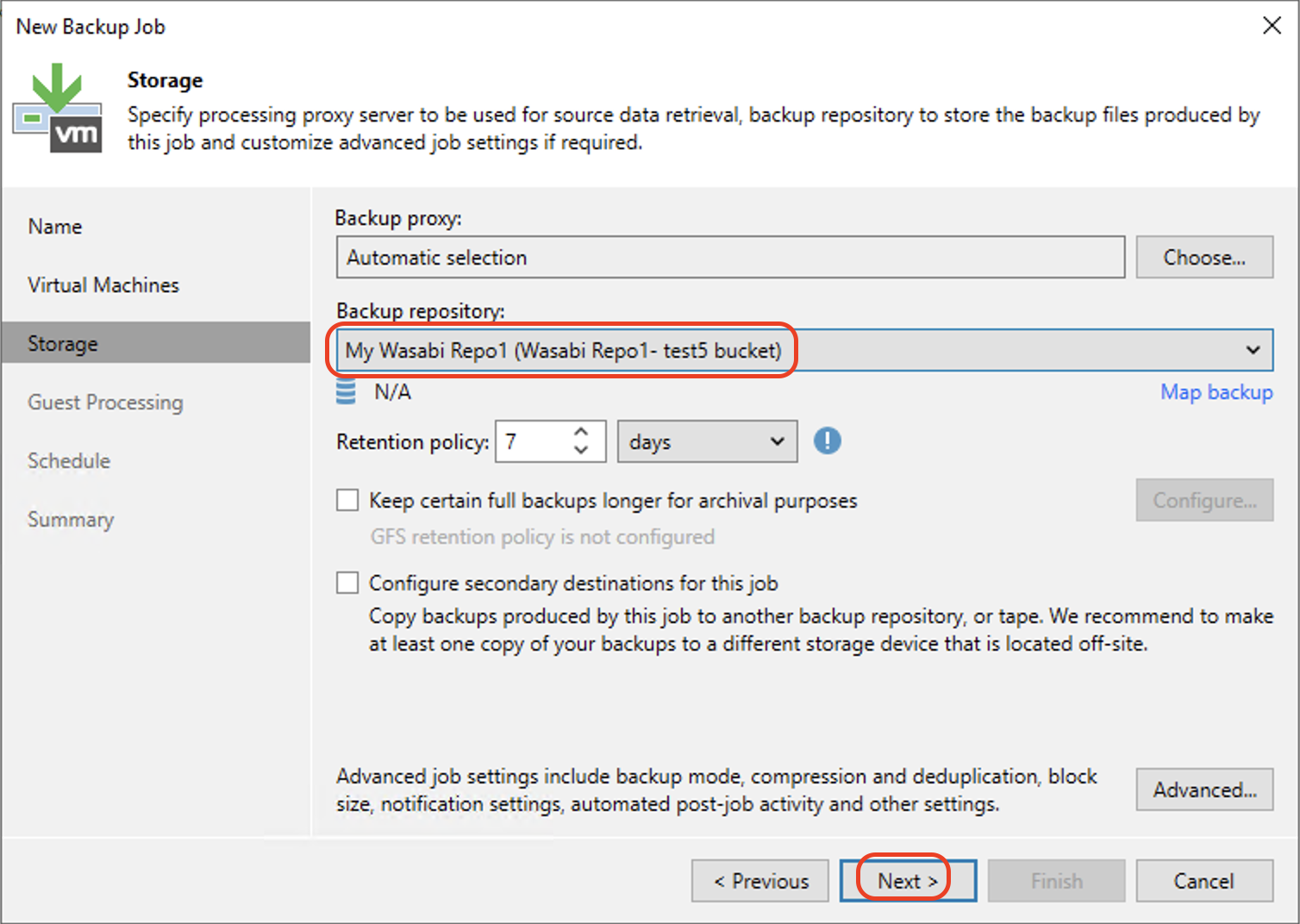
Click Next to continue with default settings. Optionally, configure Guest Processing Options.
To read about the Veeam Specific Guest Procession Options, review Veeam Guest Processing Docs.
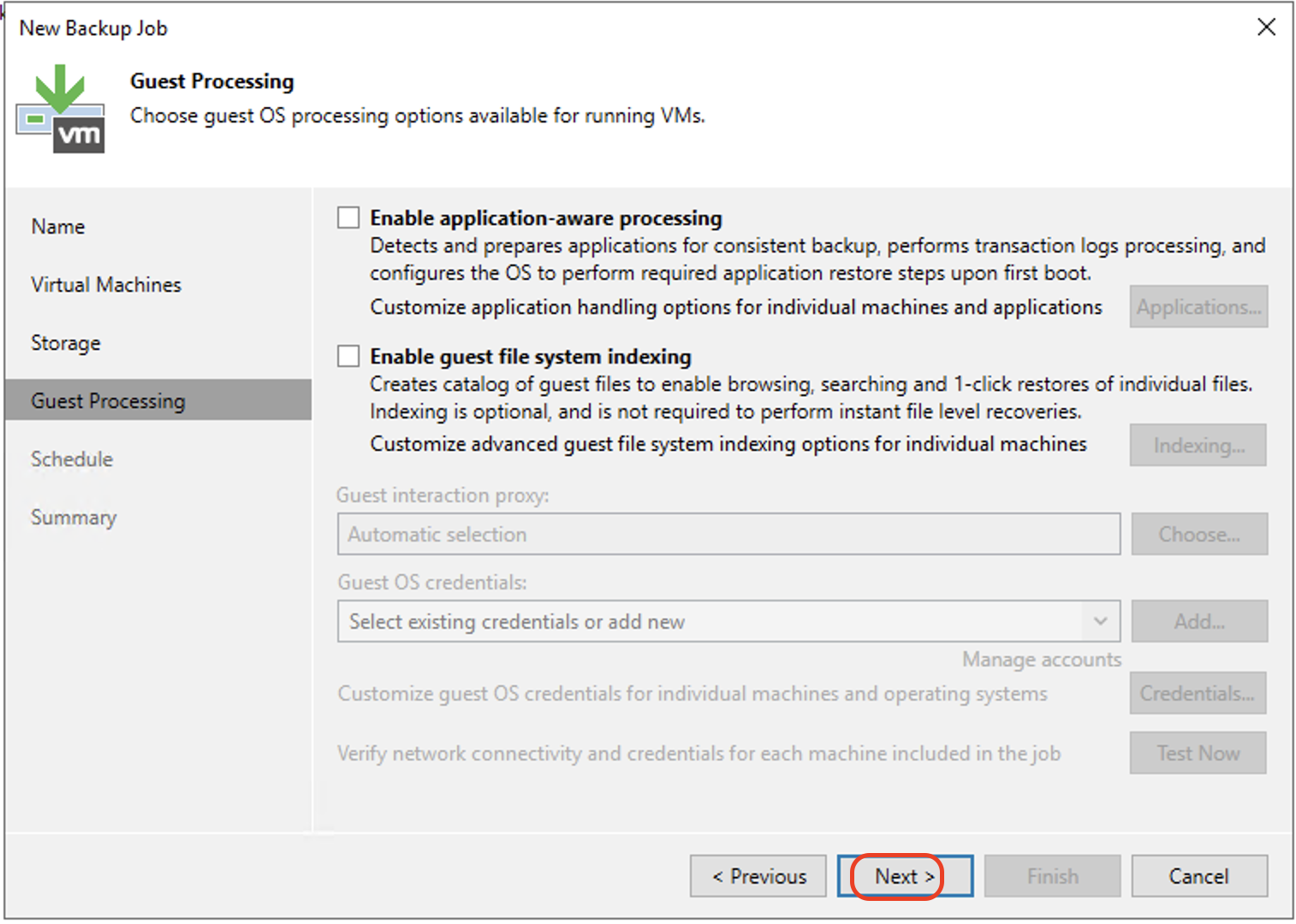
Leave the default values for Schedule and click Apply. Optionally, configure Scheduling settings to run the backup job automatically.
To read about the Veeam Specific Scheduling Options, review Veeam Job Scheduling Docs.
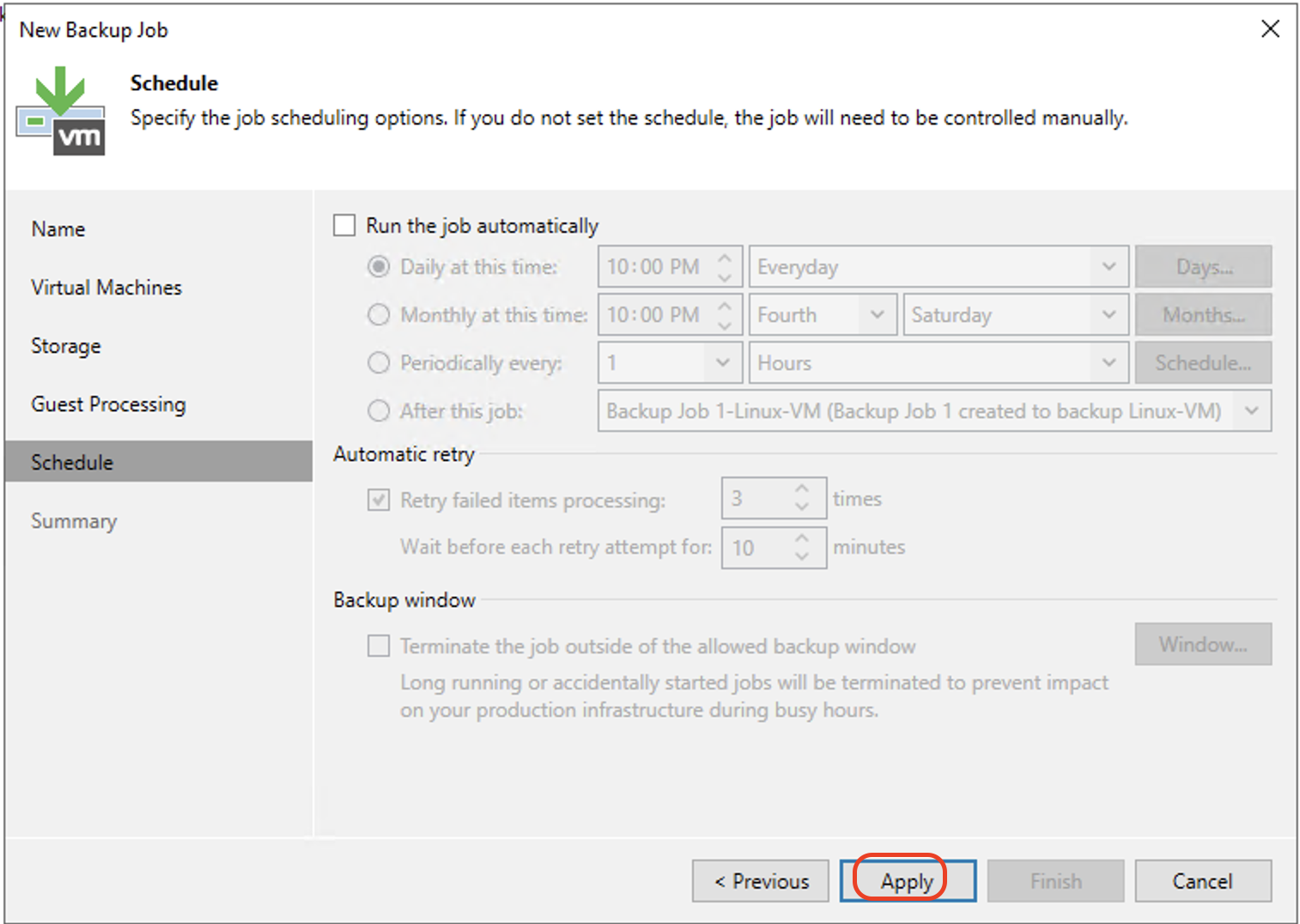
On the Summary page, check Run the job when I click Finish to initiate the backup job. Click Finish.
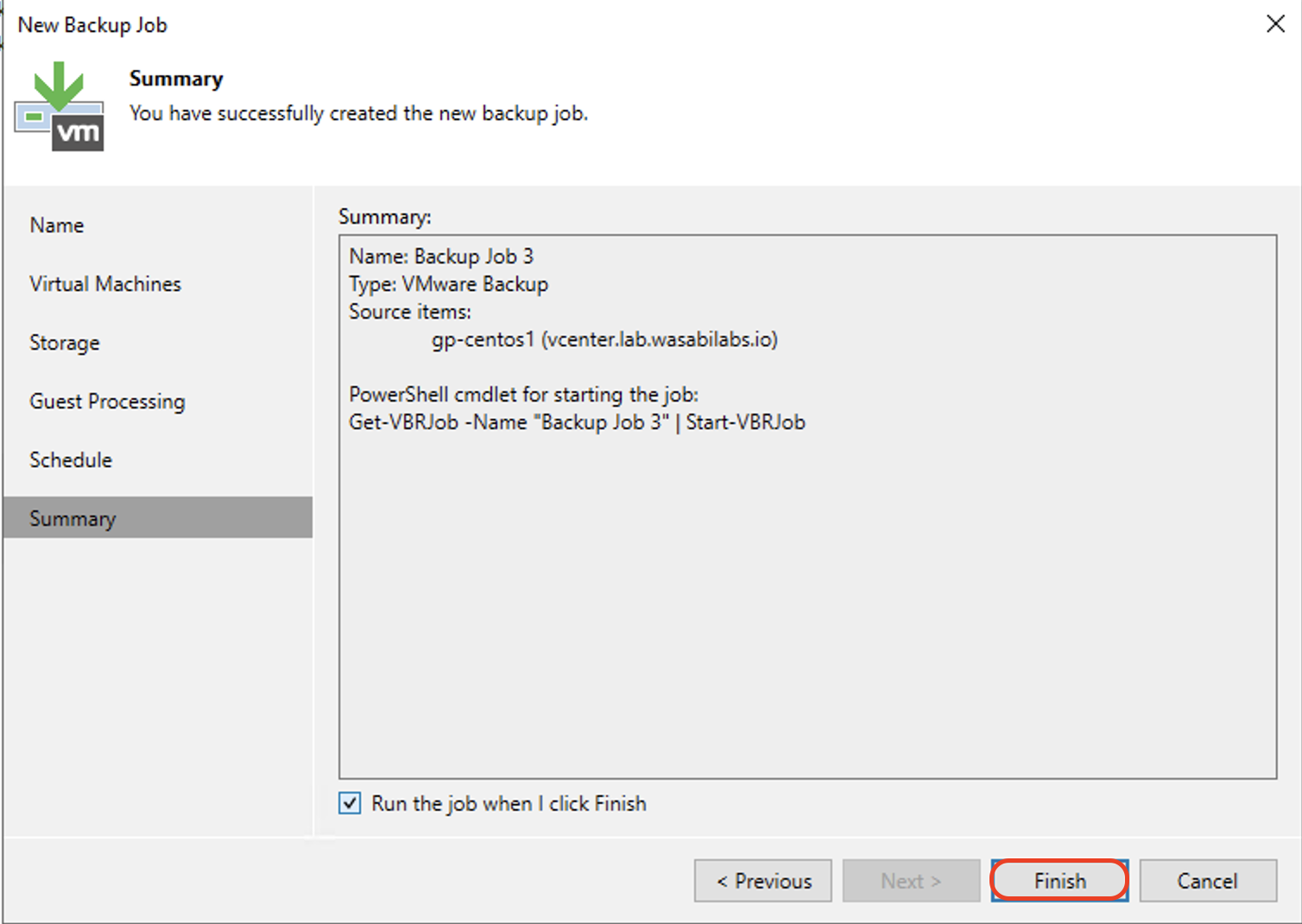
Select the Home tab. Click Jobs to see the backup job running. Select the backup job to view details for that job.
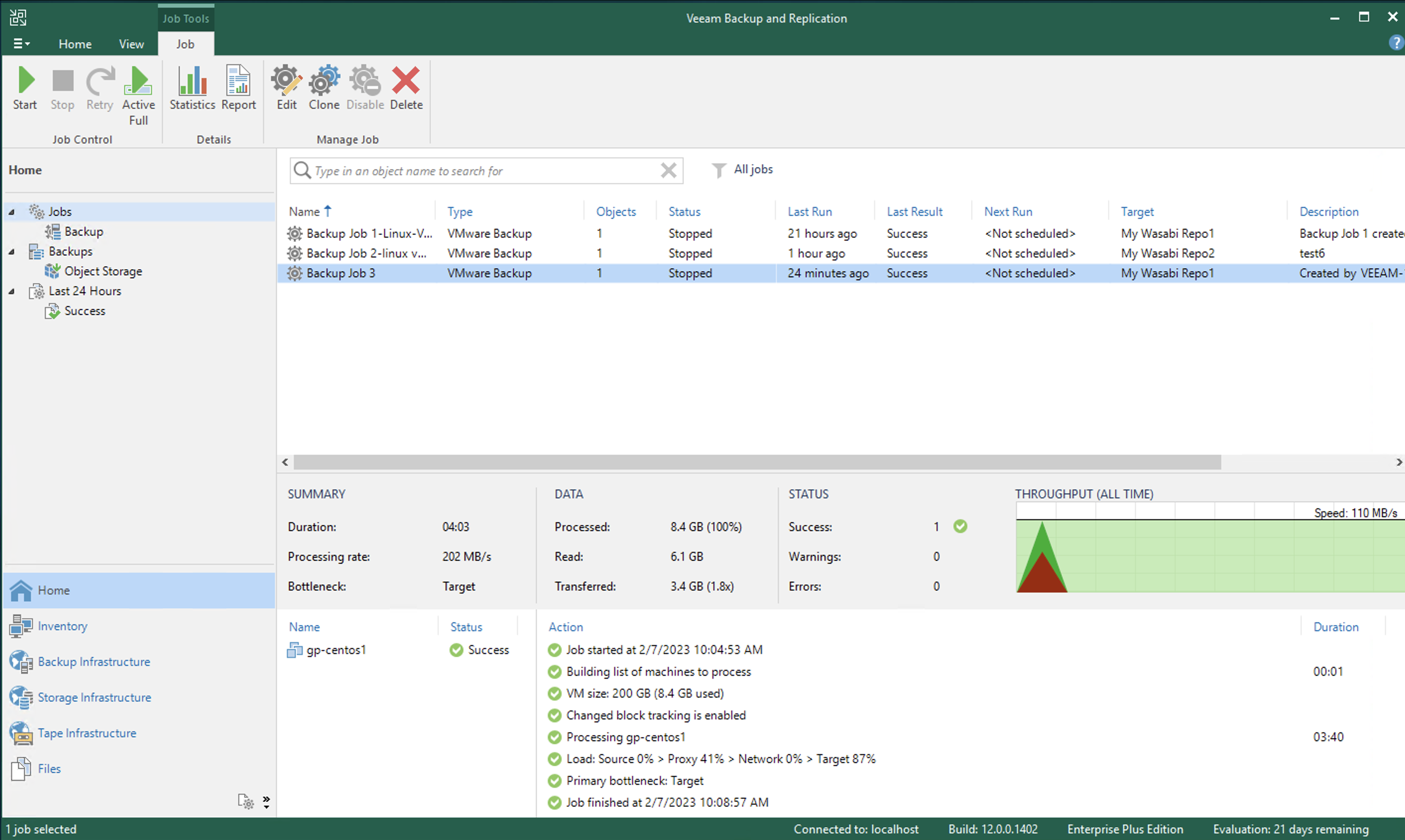
To manually run the backup job, click Home and then Jobs. Select the backup job to be started and click Start.
